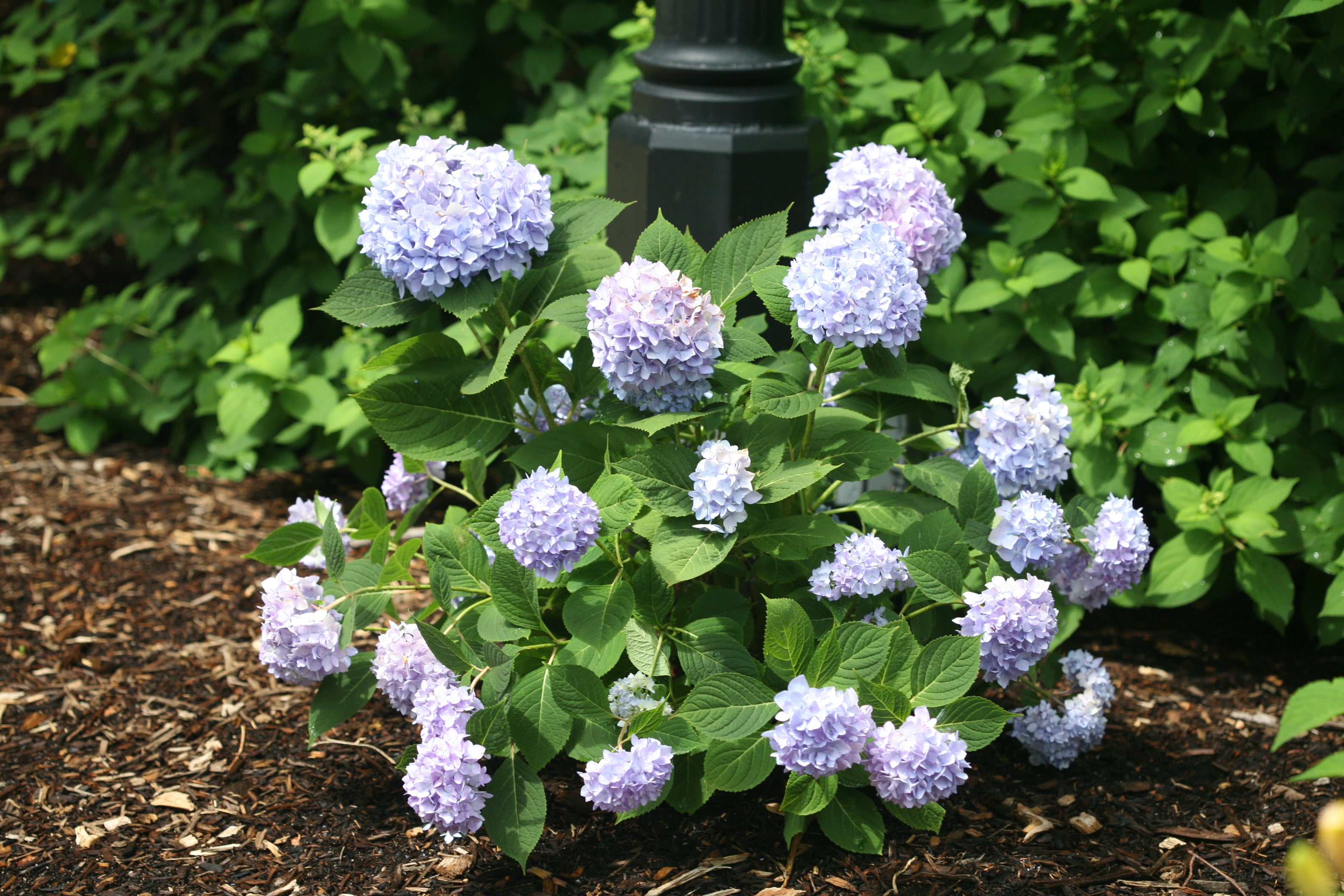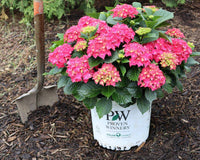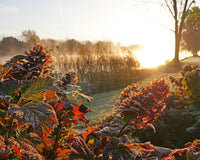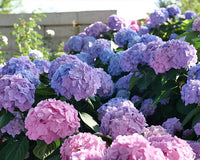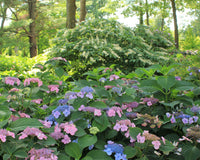Once upon a time, bigleaf hydrangeas (H. macrophylla) only bloomed on their old wood. That changed in 2004, when Endless Summer, the first bigleaf to bloom on old and new wood, was introduced.
How it began
Endless Summer was discovered at a farm run by Bailey Nurseries in St. Paul, MN. St. Paul is a very chilly USDA zone 4 place, but since they were growing bigleaf hydrangeas for wholesale growers, as long as the plants themselves survived, it didn't matter too much if those cold winters took out the old wood flower buds every year. One September day, growers were driving around the fields, and in a huge batch of bigleaf hydrangeas, a single plant was in flower. The growers could barely believe it, but they knew immediately what it indicated: that this plant had somehow managed to create flowers on growth it had produced that summer, something rarely seen in the species. They scooped up the plant, and the hydrangea world was changed forever.
Reblooming - but for who?
Bigleaf hydrangeas that bloom on old and new wood are known as reblooming, or remontant, hydrangeas, since they bloom first on their old wood, then after a brief rest for some vegetative growth, create flower buds on that new growth that open in the following weeks. Sounds too good to be true, right? Well, that depends on who you ask, and where they grow their hydrangeas. Lots of gardeners in warm climates would tell you that Endless Summer was a flower powerhouse, giving them loads of fresh blooms from early summer through October, maybe even November. Gardeners in zones 4-6, however, tended to be less than impressed: they often lost their old wood flowers due to cold winters, and new wood flowers appeared in September at the earliest, if they did at all.
The reason for this is that in order to make those new wood flower buds, Endless Summer hydrangea has to be kept growing vigorously and consistently from spring through summer. If it isn't, there simply isn't enough new growth there for the new wood flower buds to form on, and that wasn't happening in colder zones with shorter, cooler growing seasons. It's a good reminder that a plant only performs as well as the conditions it's growing in.
What's next?
Reblooming hydrangeas have come a really, really long way since 2004, though, and plant breeders around the world have been working toward the goal of reducing that amount of new growth a hydrangea has to create to get to the point it sets a new wood flower bud. As much as we love the original Endless Summer for its origin story and the way it changed the way people think about hydrangeas, we're even more impressed with the later introductions that take the idea and ability of the original and make it even better!

